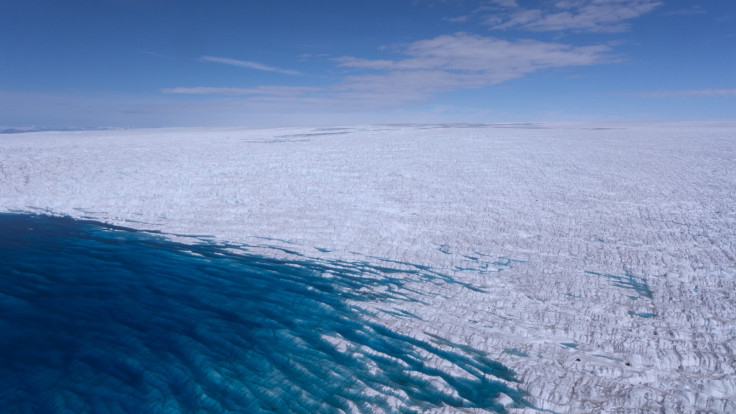Greenland Ice Sheet 'Not Nearly as Stable as We Think'

The Greenland Ice Sheet is more sensitive to climate change than previously thought and "not nearly as stable as we think", scientists have said.
Scientists from the University of Cambridge have developed a new model that takes into account increasing levels of meltwater as well as the role of the soft, spongy ground beneath the ice.
Most models assume that ice slides over hard impermeable bedrock. However, new research suggests the ground has soft and porous sediments, similar to the soft and muddy bottom of a lake.
In the work published in Nature Communications, researchers note that surface melting alone accounts for a 0.6mm rise in sea level every year. Increased movement of the ice sheet brings this up to 3mm annually.
The Greenland Ice Sheet is the second largest in the world, covering 1.7 million square kilometres. Different parts of the ice move at different speeds, causing a phenomenon known as ice flow.
Research leader Marion Bougamont said: "When these large ice sheets melt, whether that's due to seasonal change or a warming climate, they don't melt like an ice cube.

"Instead, there are two sources of net ice loss: melting on the surface and increased flow of the ice itself, and there is a connection between these two mechanisms which we don't fully understand and isn't taken into account by standard ice sheet models."
The team identified the temporal storage of water in weak sediment as a crucial process to ice flow. They were then able to reproduce how the ice sheet's movement changes according to how much surface meltwater is delivered to the ground beneath the ice.
Alun Hubbard, from Aberystwyth University, looked at the lakes that form on the surfaces of glaciers during the melt season. He found most empty in just a few hours after crevasses appear – the water enters and floods the subglacial environment.
Researchers said that although only a small amount of surface meltwater is stored in subglacial lakes, the frequency and high magnitude of lake drainage events causes the ice sheet to accelerate.
They said that in warmer years, these drainage events will become increasingly frequent.
Study collaborator Poul Christoffersen said: "Not only is the ice sheet sensitive to a changing climate, but extreme meteorological events, such as heavy rainfall and heat waves, can also have a large effect on the rate of ice loss. The soft sediment gets weaker as it tries to soak up more water, making it less resistant, so that the ice above moves faster. The Greenland Ice Sheet is not nearly as stable as we think."
© Copyright IBTimes 2024. All rights reserved.







